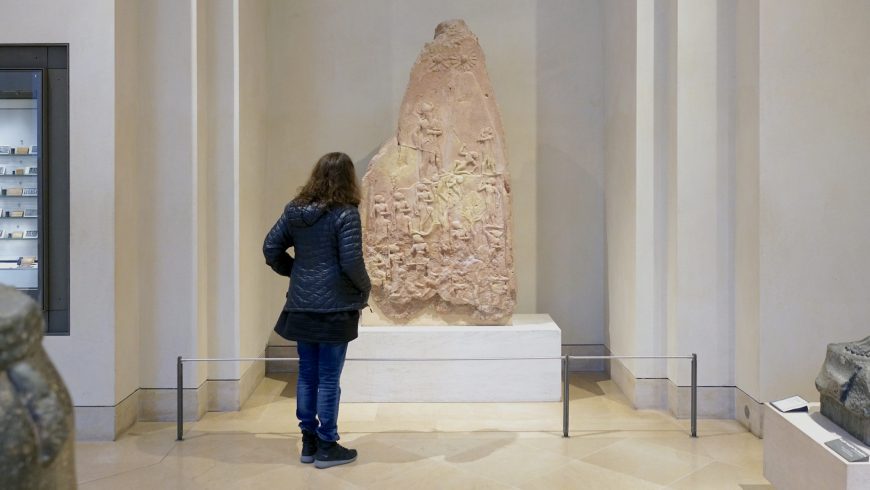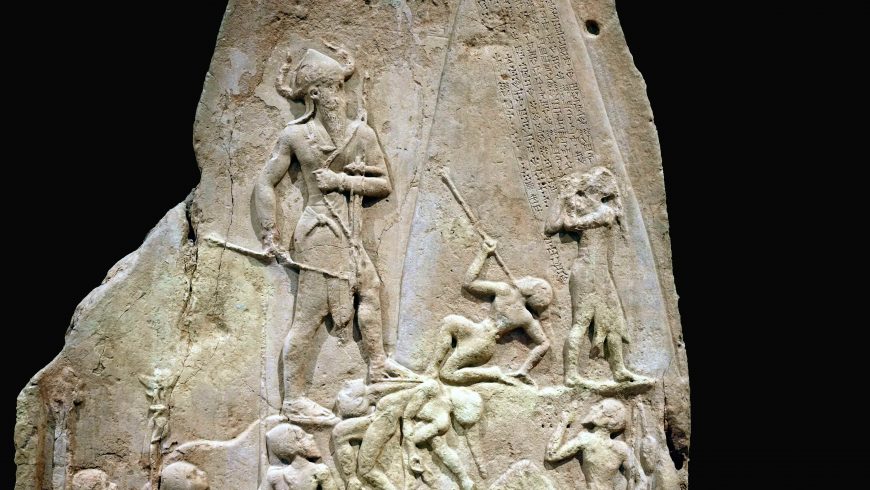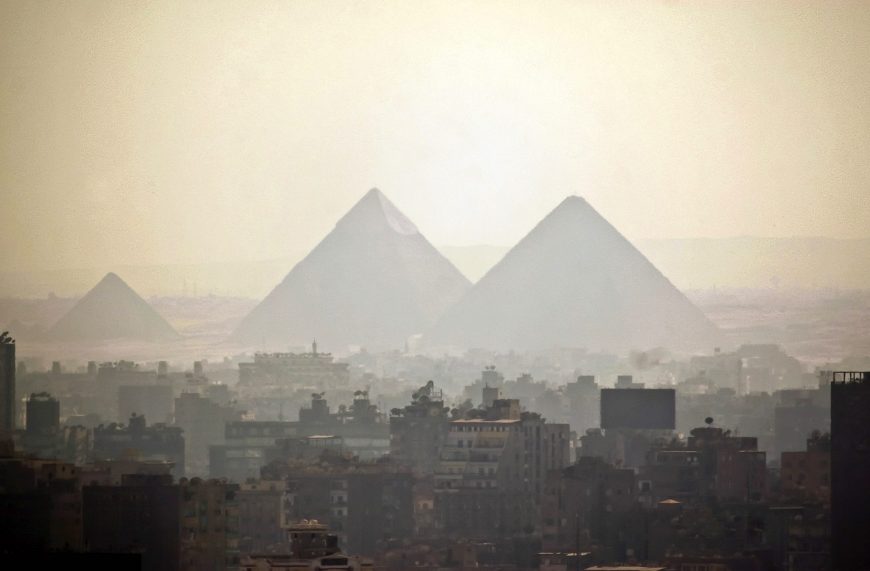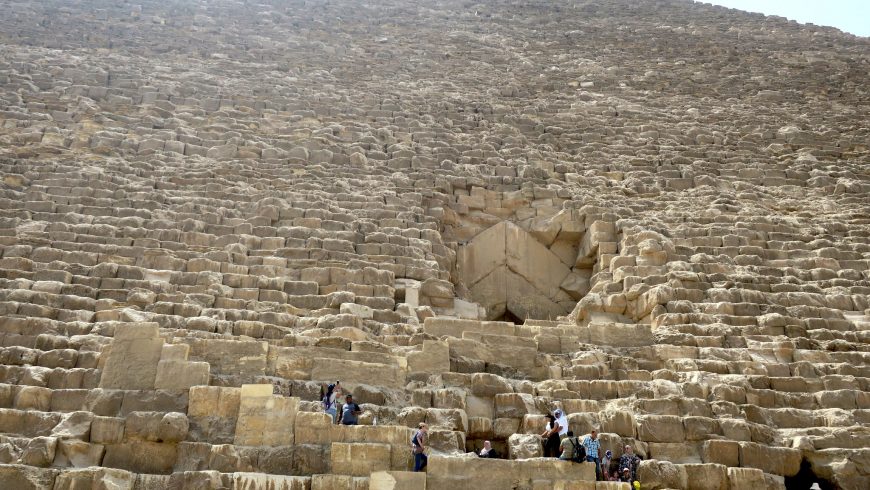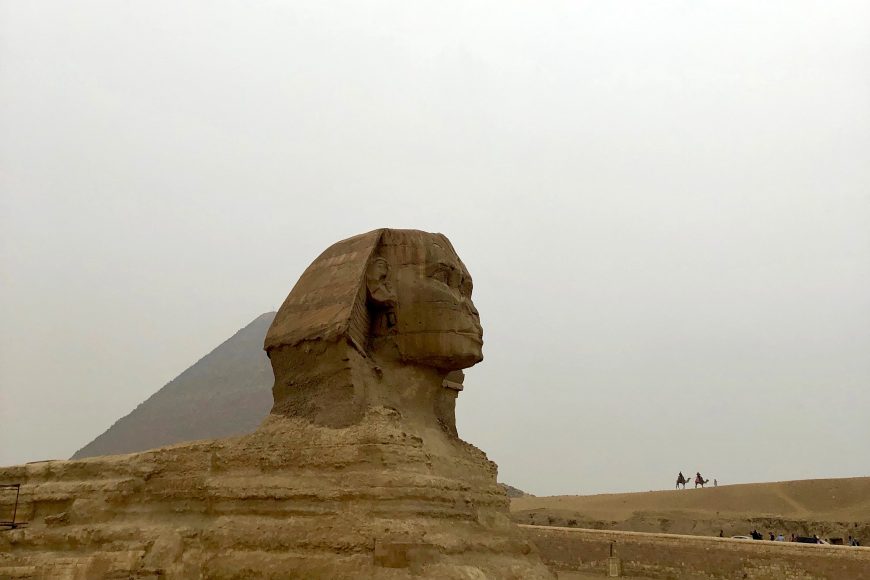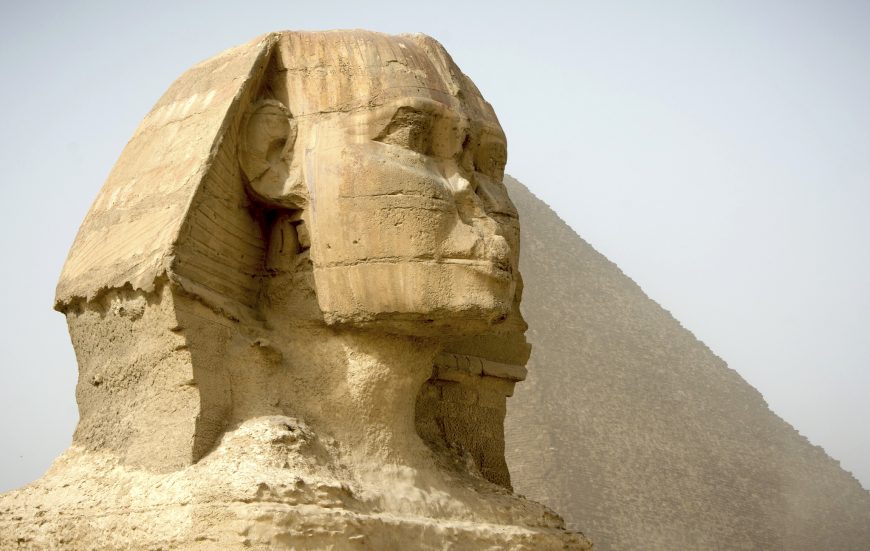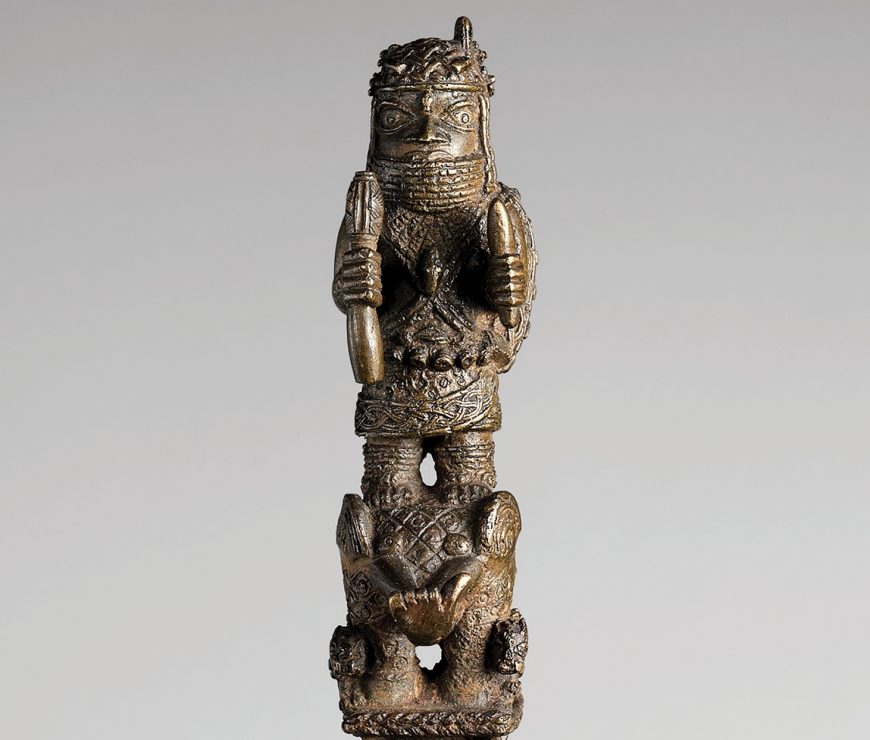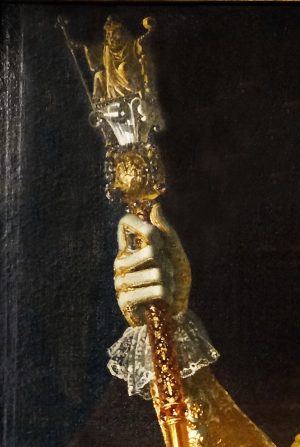University of California San Diego Power and Politics Discussion
Question Description
I’m working on a writing discussion question and need an explanation and answer to help me learn.
For this discussion topic, I want you to choose one Canvas page from this unit’s module, Power and Politics; read and view all content/articles/videos on that page. Choose 1 image from the Canvas content, embed it into the body of your post, and make connections on how it is relevant in today’s world (anywhere in the world). You may select any images, which includes the artworks of Social Protest. This means you may have to do a little research in understanding the original work and a current issue (connection). Choose a second image based on your connections and add that to your post. Got that?
-
-
- Recap the course content (all articles, texts, and videos) from one entire Canvas page.
- Add 2 images (One from Canvas, another from your research) by embedding them into your Post
- Tell us about what you are sharing is connected to what you learned.
-
As always, please be respectful with your discourse and your words. Let’s do our best to listen with respect and keep an open mind.
Getting started
1. Make sure you are reading all Canvas Module content, exploring all related links, and watching all videos related to the subject you choose before writing your post. Refer to the Canvas content specifically by name by including the page/article title.
-
- Choose an image of an artwork from this Unit: Power and Politics
- Make sure that you can identify a contemporary issue that is directly related to that image.
- Choose a second image (not from our class) to support your connection based on your research
2. Upload the images to your post. (Embedding Instructions, Click Here)
-
- Include the image info: Image information: title, artist, medium (what it is made of, date)
- Make a contemporary connection to your image from this unit’s module. Basically, tell us why the image you chose relates to “today’s” world. Remember, this can be related to anywhere in the contemporary world of 2021.
-
- Use your own cultural background, ethnicity or race to make the connection- if you would like to.
-
Tell us, what the original artwork is about. If you refer to websites outside Canvas, make sure you use a citation (tell us where you found your information).
-
Tell us, why you think that this image is related to today’s world.
-
Be specific; use an example of a current issue that relates to the ideas from your selected image from this unit.
- Be sure to refer to this unit directly but including quotations that relate to what opinions/ideas/facts you are sharing with us.
-
Your post should be approximately 350-500 words or up to 5 minutes (if a video/audio response).
Power & Politics are so inextricably connected in art that we can’t discuss political art, without addressing issues of power (which is directly connected to social issues). The state (government) funded art from anysociety- ancient or contemporary, is political. When we look at ancient temples, palaces, amphitheaters, etc, from across the globe- we may be looking at a specific culture, however the structures (and the objects therein) that we’re looking at was likely state funded.
This means the visual information was created as an expression of the governments glory or power. In Europe, for 1500 years, the major power sources or bodies, was the Church. Therefore, during that time, the Church held the political and religious power which was symbolically seen through the presence and continuous building of cathedrals. So, while we will not look at any structures of spirituality for this section on Power & Politics, just remember that the Church did hold the power over society. This is a situation in our discussion of Themes, where there is overlap.
Whether we’re looking at the Mayan’s Palenque in Chiapas (Links to an external site.), or Egyptian temples, they were both built for the state, and glorification of the culture. As mentioned, social issues are in direct connection to power and politics, which brings us to our brief section on Social Realist art and Social Protest.
The Social Realists we’re looking at, which are in large part related to North America are meant to glorify the common person in everyday life.
The Social Protest art that we’re looking at is making critical reflections, comments on the institutions of Power, generally. Social protest art speaks up against the “powers that be”. Whether it’s the government or social hierarchies, cultural norms, etc. Protest art speaks up and against the problems of society, including for those that oppressed becasue of the Power structures.
I’ve introduced a brief page on Monuments & Memorials. This is very timely, but not a new concern to a society. Monuments are built to glorify, and they are used as symbols of power for the government. Monuments show us what is valued by the majority of the culture. Inevitably, structures of power can become suppressive, and the symbols of the culture will shift their meaning, because the values (or priorities) of the culture have changed over time. As you look to any monuments anywhere, use what you have learned about context, and apply that to your analysis of that monument. Following monuments, I have shared 3 deeply meaningful Memorials. Again, take what you know about context, and apply it.
As you engage with the course material for this week, remember that though we explore the theme of Power & Politics, many of these artworks also live in a few themes, not just Political.
As you go through this weeks content, try to:
(1) make a connection to something that YOU feel strongly about (a social issue)
(2) can you make a link to a current issue that may also deal with power, politics, or social protest?
We will start the research phase of the Protest Poster project this week, and you will share your ideas/photos with the class in an informal Padlet. This project will be due in Week 7; during this week, you will brainstorm.
Our Discussion for this week is linking the course content for this week to a contemporary issue.
But first, take a few moments to jump into Political Art…
The above image, is part of Jenny Holzer’s (Links to an external site.) Truism series, Money Creates Taste. Holzer uses the language of advertising, with simple slogan-like phrases that compel us to think deeply.
As you embark on this section, of Power and Politics, remember this phrase, money creates taste. Especially when we look to the grandiose art works of civilizations that use the tools of visual communication through convincing images for power acceleration, aggregation or social communication. The visual tastes we see in the art of the state (funded by the government) are a reflection of its government. Perhaps this could be one of the reasons why all major art movements that went against the grain or tradition also had a hard time gaining traction or art establishment respect.
Art has always been associated with power. At times in history, the individuals who made art were seen as having special powers. They could conceptualize shapes and forms and then bring them into being. They could create images and objects from dirt, ashes, and stone that looked like living creatures. These individuals were set apart they could transform, they could give life. And the images and objects they created held powers, as well. They were a means of communication with an unseen world, of exerting influence over the well-being and actions of humans. So both the artists and their art were considered to be magical in that they were out of the realm of everyday, common, and shared existence: they were supernatural and extraordinary.
The ancient Greeks believed the creativity artists possessed came to them from a muse, a personification of knowledge and the arts that inspired them to write, sculpt, and compose. The ancient Romans, who strongly believed in the family as the most basic and essential hub of societal organization, called its guiding spirit the genius, from the Latin verb meaning genui or “to bring into being or create.” The word genius came to be associated with the arts during the Renaissance, when it took on the meaning of inspiration and ingenuity visited upon the artist, often as a form of possession, setting the artist apart from, and at odds with, non-geniuses.
In addition to the power of the artist, there is the power of the art itself to imitate or mimic life. Again, according to the ancient Greeks, art’s power resides in its ability to represent nature; the closer, more real, and more natural the representation, the closer the art work is to truth, beauty and power. Among other cultures, especially those that avoid representation, art is still a means of aesthetic expression with considerable power, but with abstracted forms. For example, in Islamic cultures the human figure and forms based on direct observation are not used in religious art and architecture as only God has the ability to create living things. Instead, elaborate ornamentation based on the written word and human, animal, and plant forms is used to decorate surfaces with intricate motifs, or patterns.
The visual force of the image or object, whether representational or non-representational, has been used throughout the ages by those in power to give form to and communicate messages about themselves, their wishes or dictates, their accomplishments, and their very right to rule. Literacy has, until the recent past, in human history been a skill few had the means to develop, but leaders in secular and religious roles have fostered among their subjects and followers a visual literacy, the ability to “read” and understand images through a common “language” of subjects, symbols, and styles. Those who wish to use their art as a means of protest against an established power have traditionally used the same “vocabulary” to visually communicate their messages, as well. Especially in times of war and during periods of oppression, art has been used as a tool to protest, document, provide an alternative version, and communicate to others about people and events that become our historical record.
From the earliest of history to the modern period, works of art and architecture have been designed to convey the power of rulers. While the following examples will often rely on a shared visual vocabulary to suggest power — including expensive materials, large size, and hieratic scale — each example draws on its own culture for the most basic idea of what it means to be powerful, and each will express these ideas in its own fashion. In one culture, violence might be the hallmark of power, whereas in another support from the masses might be more important.
Victory Stele of Naram-Sin, 2254-2218 B.C.E., pink limestone, Akkadian (Musée du Louvre, Paris) (photo: Steven Zucker (Links to an external site.), CC BY-NC-SA 4.0)
Naram-Sin guided to victory by the gods
The earliest written records to survive come from the Ancient Near East — from a series of civilizations that flourished in what are now Iran and Iraq. One of the period’s earliest empires — the Akkadian empire — was established by Naram-Sin, who inherited the throne and ruled until 2218 B.C.E.
Naram-Sin’s grandfather, Sargon I, was purportedly the illegitimate son of a high priestess and sent down the Euphrates river in a basket (much like Moses — this is a common trope in ancient myth) before being rescued and raised by a gardener. He founded a city and established dominance in the region through military success. Naram-Sin continued in his grandfather’s path, gaining power through force, and extending Akkad’s range of control and influence. In order to maintain this control, though, Naram-Sin had to frequently crush rebellions.
The Victory Stele of Naram-Sin commemorates his defeat of the Lullubi. The stele — an upright stone marker — makes a strong visual statement about the power of Naram-Sin. The composition is arranged in loose registers, angling up from the lower left to the upper right. The main figure is easy to spot, here: Naram-Sin is represented in hieratic scale, so that he towers over all the figures around him. He is the highest figure on this large stele (which is over six and a half feet tall). He is also surrounded by more negative space than the other figures, who in contrast are crowded together in a jumble.
Victory Stele of Naram-Sin, 2254-2218 B.C.E., pink limestone, Akkadian (Musée du Louvre, Paris) (photo: Steven Zucker, CC BY-NC-SA 4.0)
The space around the king is empty, so that he stands out clearly. This, though, merely draws our attention to him. His power is shown through his actions and the symbols on and around him.
Just in front of him, a figure clutches a spear that Naram-Sin has thrust through his neck. The king carries other spears, a bow and arrows, and a battle-axe, as if a one-man army. Unlike Qin Shi Huangdi (Links to an external site.), who demonstrated his military power through images of his thousands of soldiers, Naram-Sin had himself presented as the most powerful member of his army, displaying a god-like ability to slaughter his enemies.
In addition to the dying figure bending backward before him, there are two more corpses splayed out in a heap beneath his left foot. Another falls vertically down the stele, breaking through the registers. Additional figures raise their hands to plead for their lives even as they flee — note how the torso and face of the pleading figure in front of Naram-Sin is facing the conquering king, while his feet clearly point in the opposite direction.
The massive and aggressive figure of Naram-Sin is capped with a horned helmet, an attribute that prior to this image was only depicted on gods and that therefore suggests that he has been deified (considered as a god). Inscriptions tell us that he was known by the title “god of Akkad,”[1] and here the power of this mighty god-king seems infinite. As he ascends the mountain, he moves closer to the three suns (one now mostly lost) at the apex of the image. These are symbols of the gods of the Akkadians, guiding Naram-Sin to victory and suggesting his own divinity.
Great Pyramids of Giza
Representations of power in the ancient world, though, reached their peak with the art and architecture of the Egyptian kings, or pharaohs, particularly in the Great Pyramids of Giza (Links to an external site.). Built by the pharaohs Menkaure, Khafre and Khufu, they remain the most monumental works of architecture in the world — no more massive buildings have ever been built. These are the only surviving works of the so-called Seven Wonders of the Ancient World, a group of marvels described in Ancient Greece to acknowledge what were considered to be the most remarkable works of art and architecture known at the time, and their survival is due to their massive style of construction.
Great Pyramids of Giza,: Khufu (c.2600-2550 B.C.E.), Khafre ( c.2575-2525 B.C.E.) and Menkaure (c.2525-2475 B.CE.) (photo: Tim Kelley (Links to an external site.), CC BY-ND 2.0)
As the focal points within a necropolis they dominate the landscape. The Pyramid of Khufu is the oldest and largest. It was originally nearly 500 feet tall at the apex, and the base is approximately 750 feet long on each side, covering thirteen acres. These numbers are so large that they are hard to grasp, but a detail photograph showing the size of the individual blocks helps convey the pyramid’s size.
Entrance to the Pyramid of Khufu, Giza (photo: Terrazzo (Links to an external site.), CC BY 2.0)
The size of the pyramids is not all that conveys the power of their patrons; the style also impacts this impression. They are not only large, and radially symmetrical, but also almost completely unadorned. Originally, the surfaces were covered with smooth blocks that would have given them perfectly straight sides, rather than the stepped sides they now have. They would therefore have presented the viewer with a structure so unified that each might even seem to be a single object on the grandest possible scale. While Qin Shi Huangdi (Links to an external site.) was also buried beneath a mound, his low hill was carefully concealed from view beneath grass and trees. In strong contrast, these works are literally man-made mountains, rising over the flat planes of Giza, dominating the landscape and dwarfing all surrounding structures. As such, they were very clear statements of the power of the god-kings buried within them.
Great Sphinx, Giza, Egypt, c. 2520 – 2494 B.C.E. (photo: Alexander C. Kafka (Links to an external site.), CC BY-ND 2.0)
The Great Sphinx
The pharaohs commissioned numerous images of themselves, many of which were created for spaces inside and around the pyramids. Perhaps most well-known of these is the Great Sphinx, guarding the entrance to the Pyramid of Khafre. It sits at the entrance to the long causeway that leads to a funerary temple and then to the pyramid. This figure, 65 feet tall and almost 190 feet in length, has the body of a lion but is capped by an image of the head of the pharaoh, wearing the royal cobra headdress.
The Sphinx sits upright and alert, in formal symmetry. The figure was not assembled out of blocks, as the pyramids were, but rather, was carved out of “living rock” — stone still connected to the earth — though there are some additions to this. The image suggests the pharaoh’s tremendous power, since it is not only colossal but also merges him with the most respected predator of Africa: the lion. The Sphinx has unusually large eyes, and this emphasis serves to suggest that this powerful creature is a most watchful guardian. Qin Shi Huangd (Links to an external site.)i entrusted his protection in the afterlife to his vigilant soldiers. Khafre, on the other hand, seems to guard himself.
Great Sphinx, Giza, Egypt, c. 2520 – 2494 B.C.E. (photo: Morgan Schmorgan (Links to an external site.), CC BY-NC 2.0)
Rattle Staff: Oba Akenzua I Standing on an Elephant (Ukhurhe),1725–50, Edo, Nigeria, bronze, copper and iron, 161.3 x 4.8 cm (The Metropolitan Museum of Art)
A staff for a Benin king
These large, watchful eyes can be found in thousands of images of gods and rulers, giving the viewer the sense that these absent individuals are nonetheless scrutinizing us. The portrait style common in the art of the Benin kingdom of the eighteenth century is highly abstract, with features of importance enlarged for emphasis. In this way, proportion is manipulated to draw the viewer’s attention to key elements, like the eyes.
Here, we see a rattle staff, called an ukhurhe, made for a powerful oba, or king. Oba Akenzua I ruled Benin in the early eighteenth century. The oba’s staff is capped with an image of himself, holding a simpler ukhurhe. This staff was probably used as a public political statement of power, unlike more traditional ukhurhe, which were carved in wood.
Akenzua’s great, wide-set eyes would have been directed both at his ancestors — the source of his power and authority — and at his subjects. The staff, over five feet tall, has a hollow segment near the top, with narrow slits along its length, which rattles when shaken during prayers. This example is brass, which means it was a high-status item. As with Qin Shi Huangdi (Links to an external site.), there is a balance in this work between worldly and spiritual power. The oba is shown dressed for a ceremony in elaborate royal garb, much of which would be made of valuable materials. As shown on the image on the ukhurhe, his headdress, the rings around his neck, and the panels on his chest would be made of coral and his armbands would be of ivory. This costly costume would declare to the viewer that the figure is no ordinary man. In a photograph of his descendant, Akenzua II (Links to an external site.) (who ruled from 1933-1978), we can see an oba in a similar costume, giving a sense of how Akenzua I would have appeared in life.
The figure’s importance is declared by his placement at the top of this luxury item, and his symmetry gives him a stable, solid, dignified appearance. His enlarged eyes declare his watchful nature. While the image of Akenzua itself is small — only about six inches in height — hieratic scale is used to demonstrate his importance: he stands on the back of an elephant, an animal associated with rulership, and is more than twice its height. The elephant’s trunk ends in a human hand. This may be a reference to Iyase n’Ode, believed to be able to transform into an elephant, who led a rebellion against Akenzua.
Placing Akenzua atop the elephant makes a strong statement about Iyase n’Ode’s defeat and the oba’s triumph. The elephant is also hemmed in on both sides by leopards, symbols of the oba’s power.[2] The elaborate nature of the depiction of the oba is the result of the centrality of the king to the art of Benin.
Detail, Rattle Staff: Oba Akenzua I Standing on an Elephant (Ukhurhe),1725–50, Edo, Nigeria, bronze, copper and iron, 161.3 x 4.8 cm (The Metropolitan Museum of Art)
The oba was both the main subject of the art, and also its most important patron. This forceful depiction of Akenzua’s power is fitting, as he was the ruler of a kingdom that had ruled the region since the fifteenth century. In this case, therefore, the iconography — the series of signs and symbols in the art of a culture — works with the principles of composition to create a strong statement of the oba’s authority.
Napoleon on his throne
We again confront the direct gaze of the ruler when we stand before Jean-Auguste Dominique Ingres’s large oil painting Napoleon on his Imperial Throne. This is a work that tries very hard to capture some of the majesty of earlier images of rulers through composition, technique and symbolism.
Jean-Auguste-Dominique Ingres, Napoleon on his Imperial Throne, 1806, oil on canvas, 260 x 163 cm (Musée de l’Armée, Paris)
The recently crowned emperor is shown centered in a highly symmetrical composition, seated on a gilded throne that frames his head like a halo, suggesting his divinity. The semi-circle of the white ermine fur cape draped over his shoulders visually completes the semi-circle of the back of the throne. The circles are carefully aligned to seem to be continuations of one another, thereby doubly framing Napoleon’s head.
Staff with an image of Charlemagne (detail), Jean-Auguste-Dominique Ingres, Napoleon on his Imperial Throne, 1806, oil on canvas, 260 x 163 cm (Musée de l’Armée, Paris)
Napoleon’s clothing and accessories could not be more sumptuous: fur, velvet in red — the color that has symbolized imperial power since Ancient Rome — and gold. The staff he holds in his right hand is topped with an image of Charlemagne, the revered medieval French king who was the first to be crowned emperor of the Holy Roman Empire. This great predecessor (Charlemagne is French for “Charles the Great”) is posed quite similarly to Napoleon, suggesting a strong connection between these two French rulers, each of whom was the first in his era to be declared emperor.
Like the image of Akenzua on his ukhurhe, holding an ukhurhe, here the small image of Charlemagne atop Napoleon’s staff also holds in his right hand a staff — this one capped with the fleur-de-lis (the symbol of the French monarchy).
The staff in Napoleon’s left hand was believed at the time to have belonged to Charlemagne, and the sword he bears is that of his precursor, as well. As Qin Shi Huangdi (Links to an external site.) used ancient burial practices to connect himself to the tradition of his ancestors, Napoleon used these medieval treasures to connect himself with the past of France. He also bears the golden laurel wreath crown of the Roman emperors, and the arms of his golden throne and the carpet at his feet both contain the image of the Roman eagle.
Ingres paints all of these elements with extreme precision, so that we can see each gem and jewel, and with such attention to the texture of the materials that is seems almost as if we could feel them beneath our fingers, as we look at the image. This lavish portrait was an attempt by Napoleon to demonstrate his great power, and also to argue that, although he had created a new empire, he was continuing the tradition of Charlemagne, and of the great Roman emperors of antiquity.







